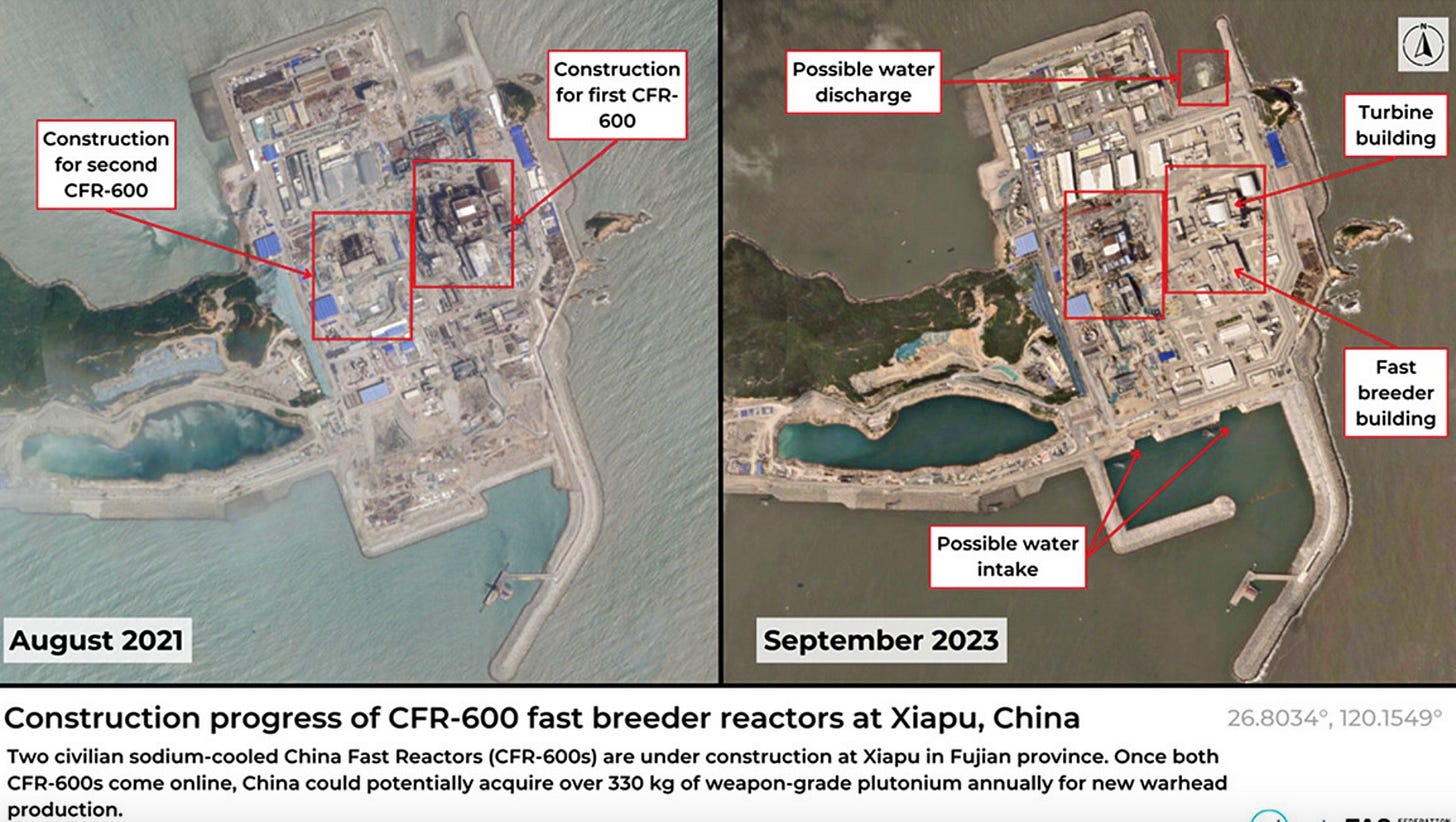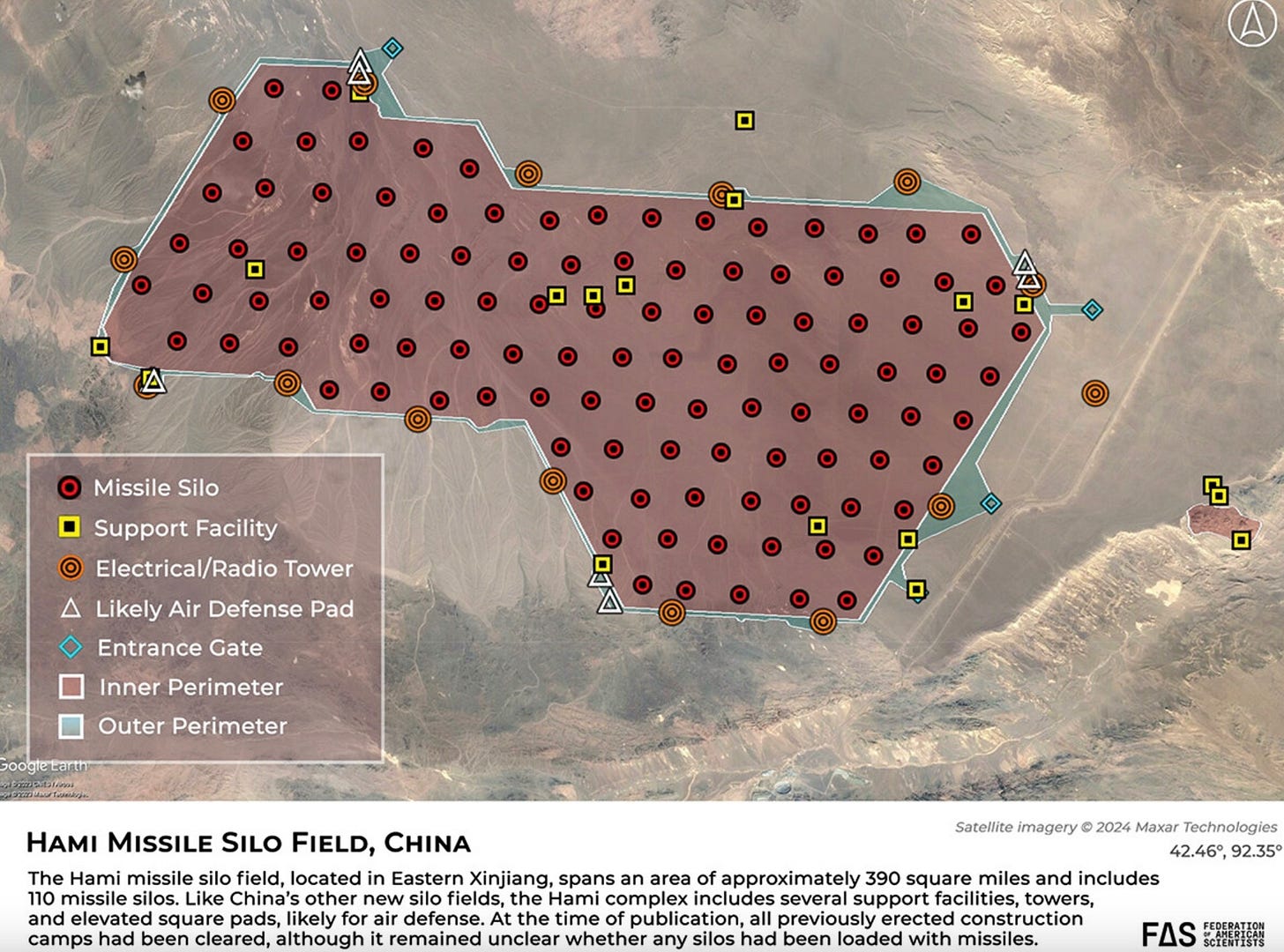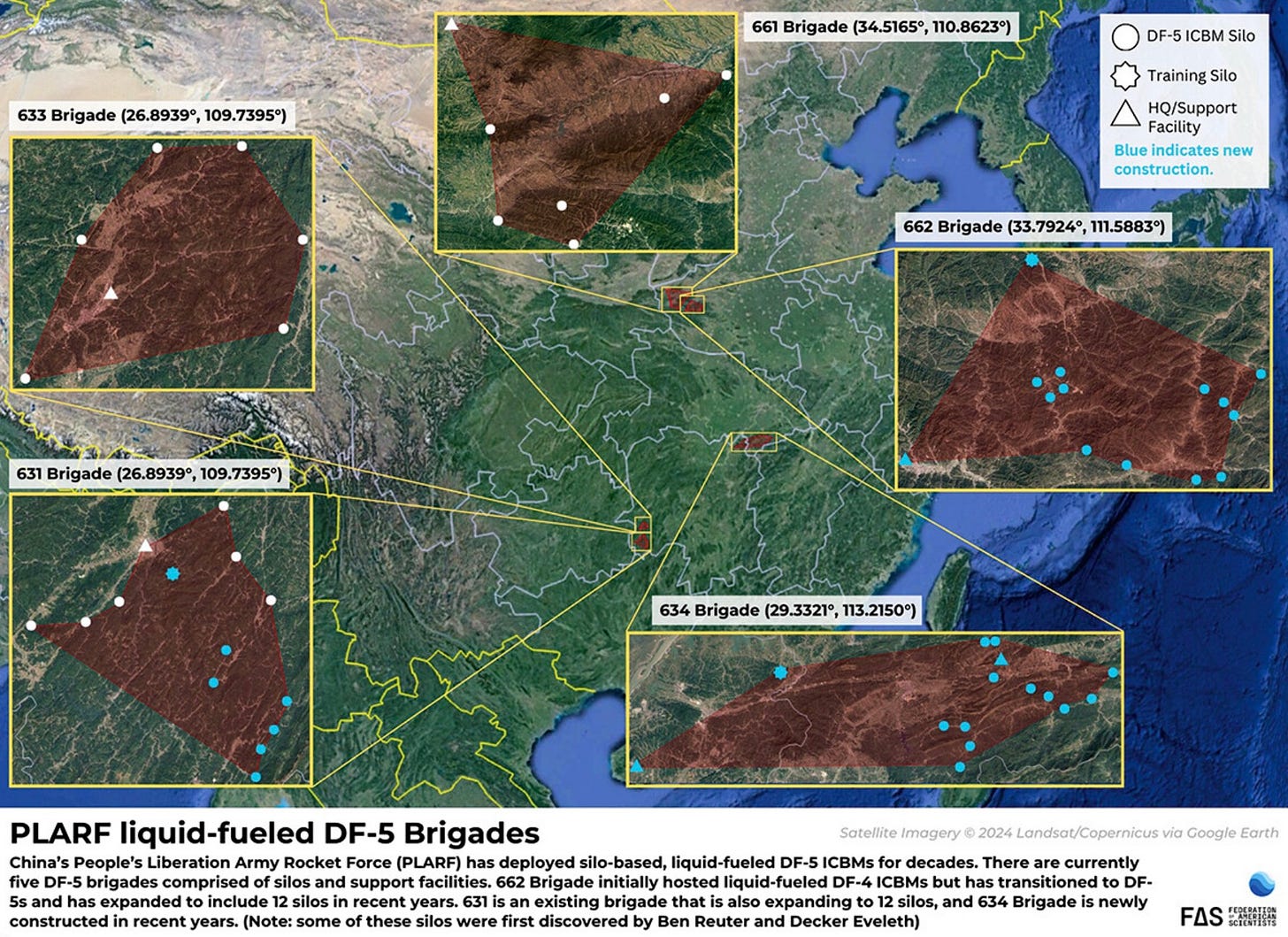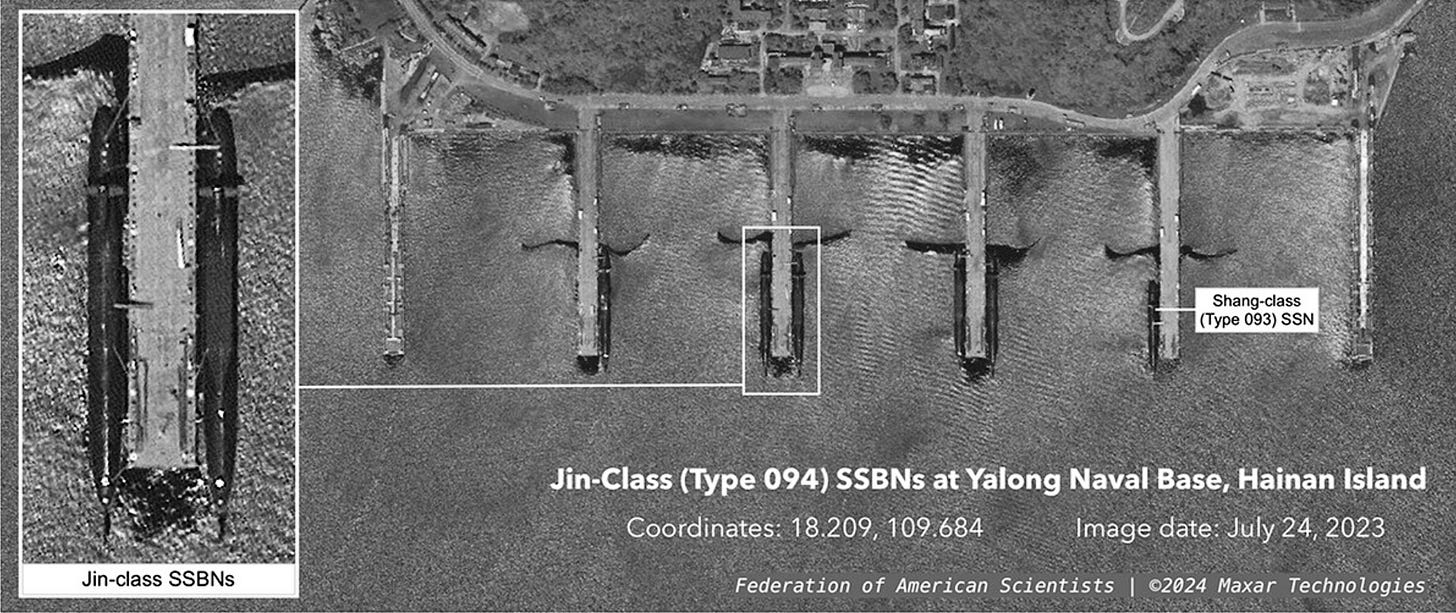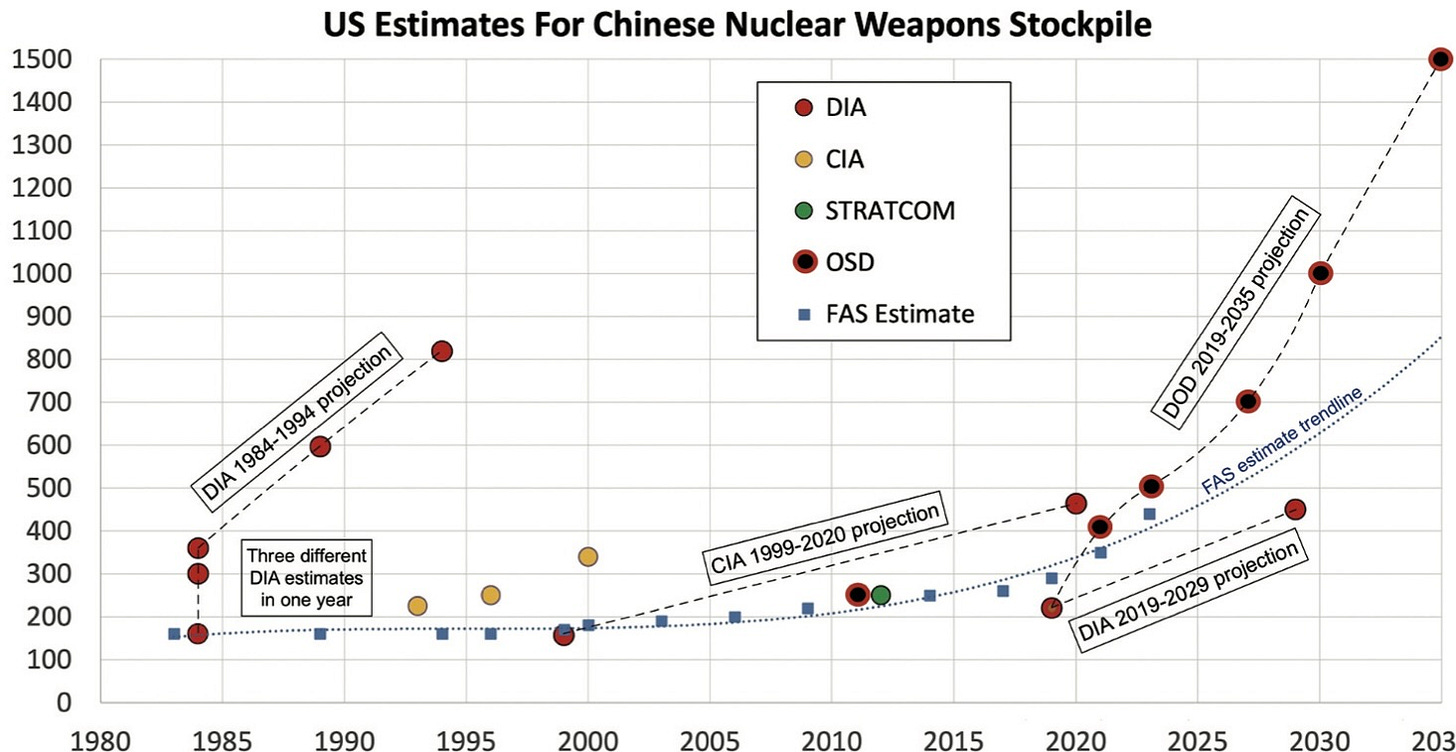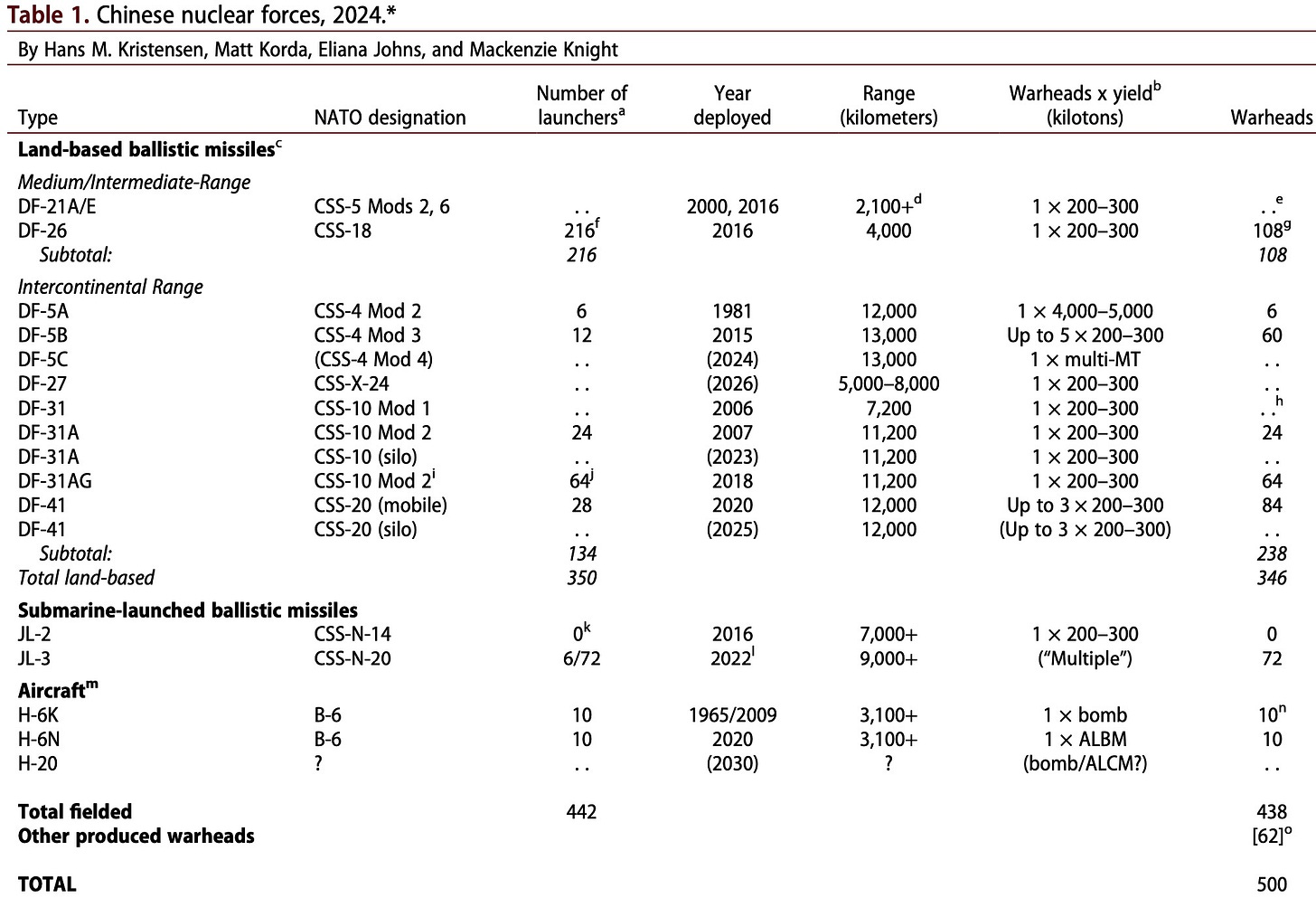China In Arms BOOKSTORE and GIFT SHOP!
Follow on Twitter
Subscribe: $5 Month/$50 Annual (unable to secure a subscription contact the bank for permission for Stripe deposits).
Paid Subscriptions can choose 2 free books.
19 January 2024 (Friday)
New Report on China's Nuclear Weapon Arsenal
Dr. Strangelove Returns!
By Wendell Minnick (Whiskey Mike) 顏文德
TAIPEI - One of my secret squirrels in the U.S. intelligence community (IC) sent me an encrypted message in high praise of the latest assessment available in the public domain of China’s nuclear weapons and strategic missile capabilities.
“In my opinion, this is the best reference that is generally available.” To me, my source is the Voice of God.
Bulletin of the Atomic Scientists, “Chinese Nuclear Weapons, 2024”, Vol. 80, No. 1, 49–72, by Hans M. Kristensen, Matt Korda, Eliana Johns, Mackenzie Knight (15 January 2024).
The report is available for download at this LINK.
Or download my copy of the PDF:
If you do download and read the report, I also recommend you review a special section on Chinese nuclear weapons researched by the China Aerospace Studies Institute at the Air University, Maxwell Air Force Base, Alabama: LINK.
In my summation, these are my humble conclusions:
Taiwan is finished. China will invade as early as 2027, according to the report. But I believe it will be sooner. With China’s ballistic and cruise missile arsenal, it will make it nearly impossible for U.S. Navy ships to avoid saturation, multi-layered, multi-directional missiles armed with conventional warheads.
The U.S. Navy and U.S. Strategic Air Command (SAC) can no longer defend the U.S. from a nuclear strike by mainland China.
China’s mix of land-based road-mobile and silo-based, air-launched, and submarine-launched nuclear arsenals, now online or soon will be, gives China the option of using either nuclear or conventional warheads on Short, Medium, and Intermediate-Range Ballistic Missiles (IRBM). It is unlikely the Chinese would waste money arming an Intercontinental Ballistic Missile (ICBM) with a conventional warhead.
The U.S. Navy also has the unique problem of defending itself against China’s Anti-Ship Ballistic Missiles (ASBM) that would target aircraft carriers and destroyers via the DF-21D and DF-26 missiles. China has been the first nation in history to develop these types of ballistic missiles that are able to locate a moving ship even after burning through the atmosphere.
Related to the topic, I have collected significant data from defense expos around Asia, including China, on weapon systems available for export. These books might helpful:
Chinese Air-Launched Weapons & Surveillance, Reconnaissance and Targeting Pods (2019)
Chinese C4I/EW (Vol. 1) (2022) Volume 1.
Chinese C4I/EW (Vol. 2) (2022) Volume 2.
Chinese Rocket Systems: Multiple Launch Rocket Systems (2016)
The new paper is NOT an academic sleeper. At least not for myself, as it takes a lot to get my attention.
The modernization of China’s nuclear arsenal has both accelerated and expanded in recent years. In this issue of the Nuclear Notebook, we estimate that China now possesses roughly 500 nuclear warheads, with more in production to arm future delivery systems. China is now believed to have one of the fastest-growing nuclear arsenals among the nine nuclear-armed states.
Within the past five years, China has significantly expanded its ongoing nuclear modernization program by fielding more types and greater numbers of nuclear weapons than ever before. Since our previous edition on China in March 2023, China has continued to develop its three new missile silo fields for solid-fuel intercontinental ballistic missiles (ICBMs), expanded the construction of new silos for its liquid-fuel DF-5 ICBMs, has been developing new variants of ICBMs and advanced strategic delivery systems, and has likely produced excess warheads for eventual upload onto these systems once they are deployed. China has also further expanded its dual-capable DF-26 intermediate-range ballistic missile force, which appears to have completely replaced the medium-range DF-21 in the nuclear role. At sea, China has been refitting its Type 094 ballistic missile submarines with the longer-range JL-3 submarine-launched ballistic missile. In addition, China has recently reassigned an operational nuclear mission to its bombers and is developing an air-launched ballistic missile that might have nuclear capability. In all, China’s nuclear expansion is among the largest and most rapid modernization campaigns of the nine nuclear-armed states.
We estimate that China has produced a stockpile of approximately 440 nuclear warheads for delivery by land-based ballistic missiles, sea-based ballistic missiles, and bombers. Roughly 60 more warheads have thought to have been produced, with more in production, to eventually arm additional road-mobile and silo-based missiles and bombers.





